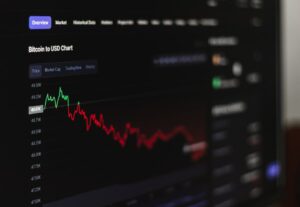Order Book vs. Market Depth: What’s the Difference in Forex Trading?
In the world of forex trading, understanding the dynamics of the market is crucial for making informed decisions. Two tools that are often used by traders to gain insight into the market are the order book and market depth. While both provide valuable information about supply and demand in the market, they have distinct differences that traders should be aware of. In this article, we will explore the differences between the order book and market depth and how they can be used in forex trading.
The order book, also known as the depth of market (DOM), is a record of all the buy and sell orders for a particular currency pair at a given time. It provides a snapshot of the current market sentiment and the level of interest from buyers and sellers. Traders can see the price and quantity of each order, allowing them to gauge the level of support and resistance at different price levels.
The order book is displayed as a list of bid and ask prices, with the highest bid and lowest ask prices at the top of the list. The bids represent the price at which buyers are willing to purchase a currency pair, while the asks represent the price at which sellers are willing to sell. The difference between the highest bid and the lowest ask is known as the spread, which is an important factor to consider when executing trades.
By analyzing the order book, traders can identify key support and resistance levels. If there is a large number of buy orders at a certain price level, it suggests a strong demand and potential support level. On the other hand, a large number of sell orders at a specific price level indicates a high supply and potential resistance level. Traders can use this information to anticipate market movements and make informed trading decisions.
While the order book provides valuable information about individual orders, market depth takes it a step further by showing the cumulative volume of orders at each price level. Market depth displays a graphical representation of the order book, usually in the form of a histogram or a ladder. The vertical axis represents price levels, while the horizontal axis represents the cumulative volume of orders.
Market depth allows traders to visualize the concentration of orders at different price levels. By observing the shape and size of the market depth graph, traders can assess the overall strength of the market and the liquidity available at different price levels. A steep graph with significant volume at each price level indicates a highly liquid market with strong buying and selling interest. Conversely, a shallow graph with low volume suggests a less liquid market with limited interest.
Market depth can also provide insights into potential market manipulation. If there are large orders placed at certain price levels that are quickly canceled or filled, it may indicate a deliberate attempt to mislead other traders and manipulate the market. Traders should be cautious when interpreting market depth and consider other factors before making trading decisions.
In conclusion, the order book and market depth are important tools for forex traders to understand the supply and demand dynamics in the market. While the order book provides a detailed view of individual buy and sell orders, market depth offers a broader perspective by displaying the cumulative volume of orders at each price level. Traders can use these tools to identify support and resistance levels, assess market liquidity, and anticipate market movements. However, it is important to consider other factors and use these tools in conjunction with technical and fundamental analysis for a comprehensive understanding of the market.






